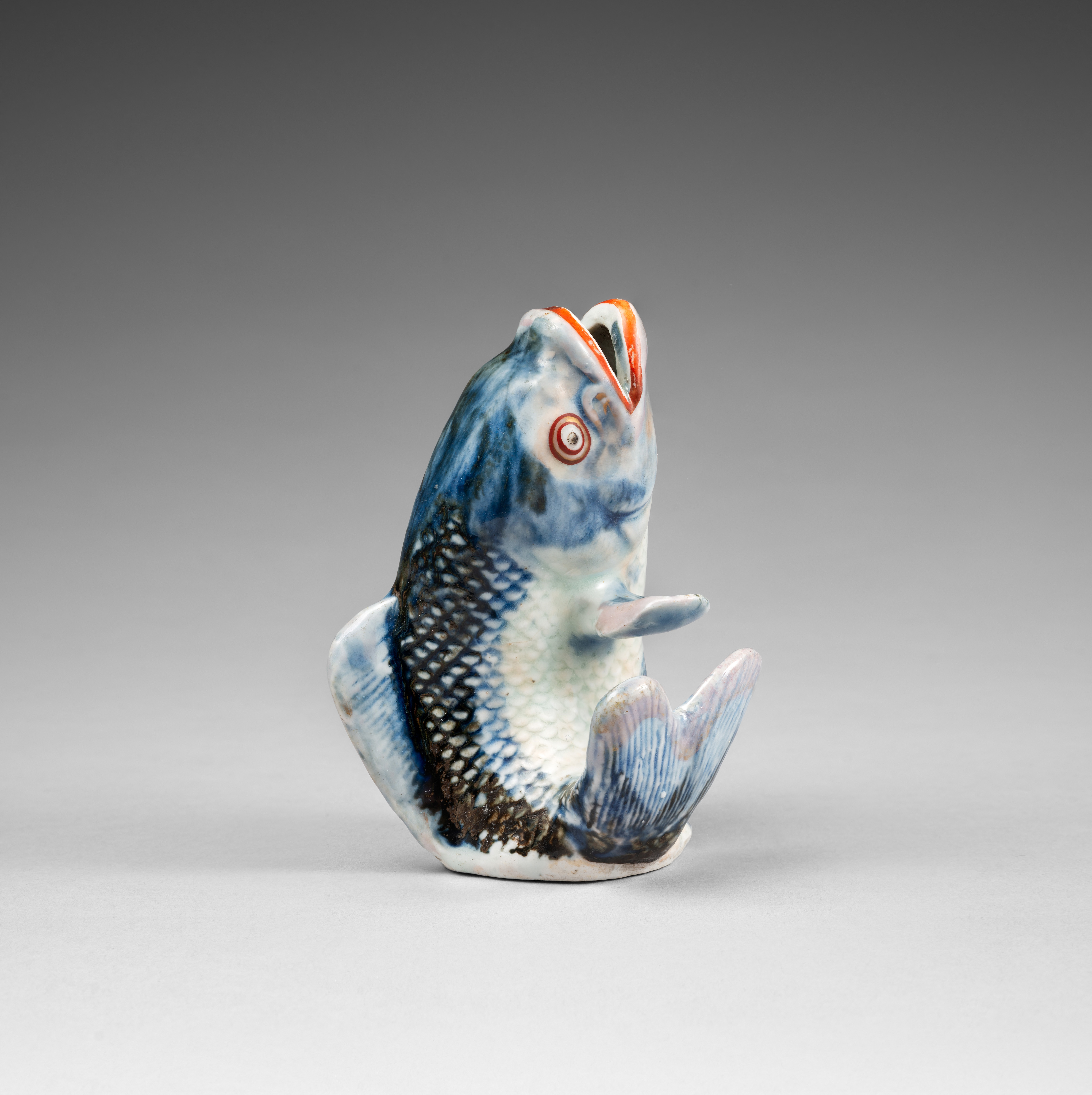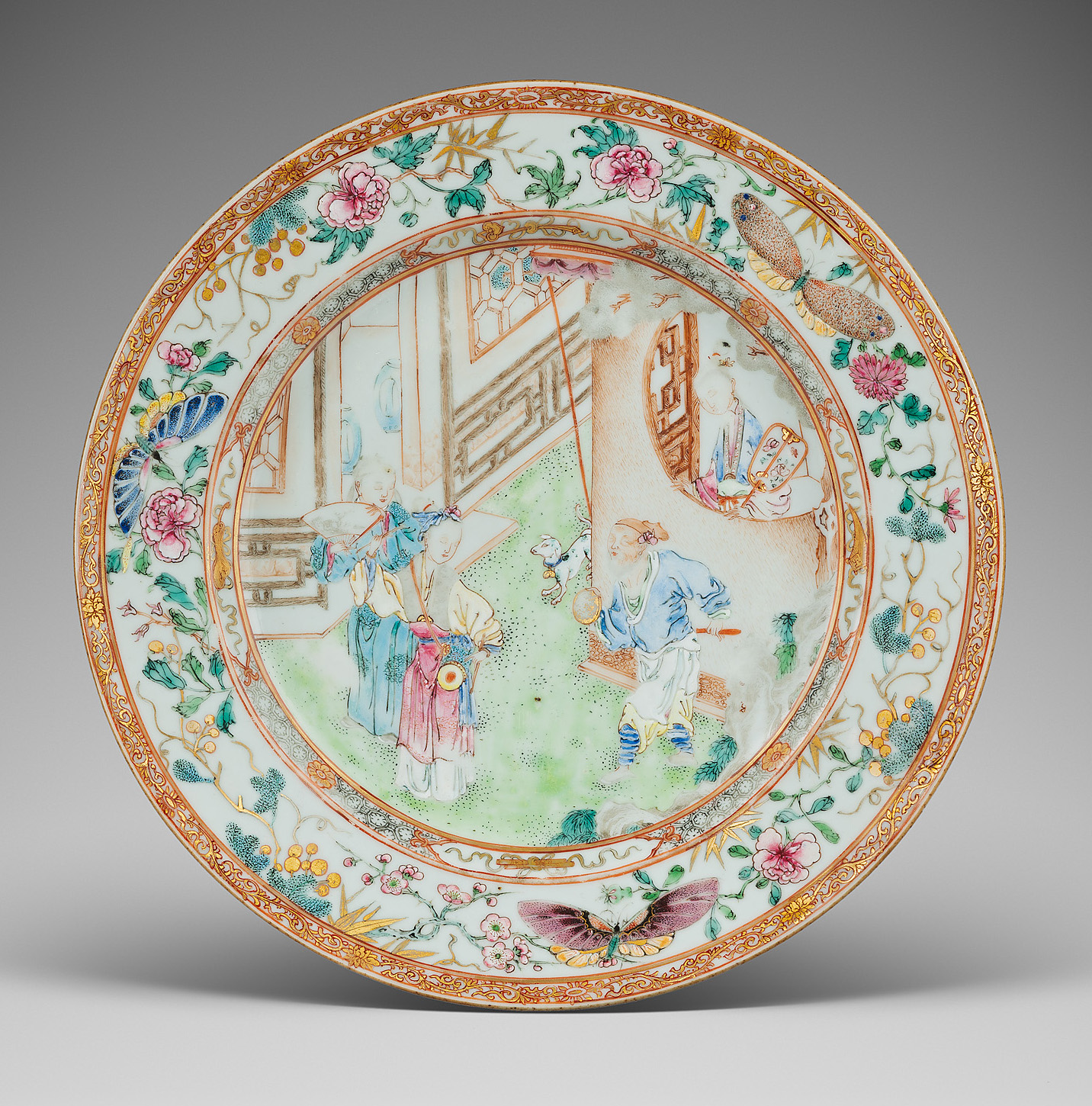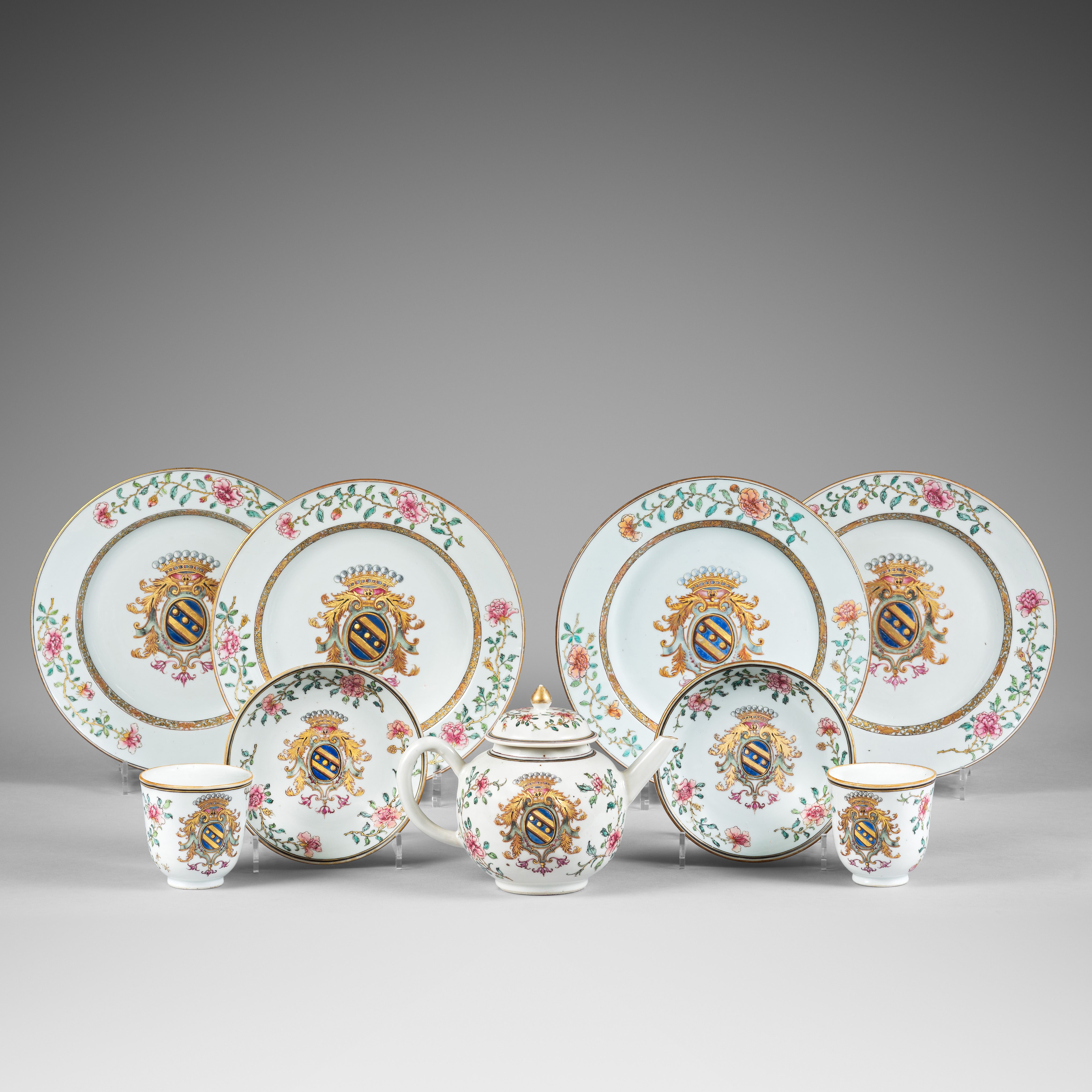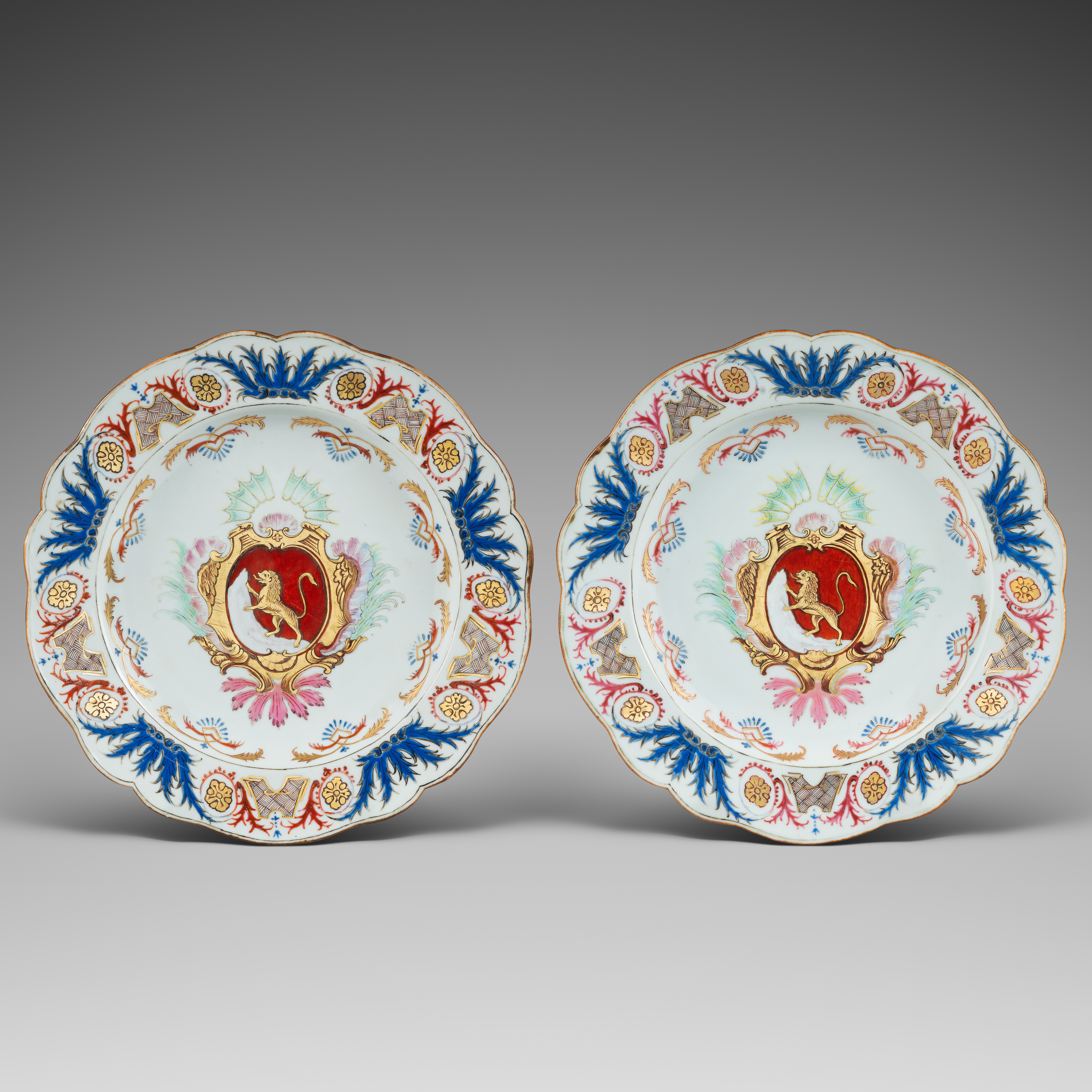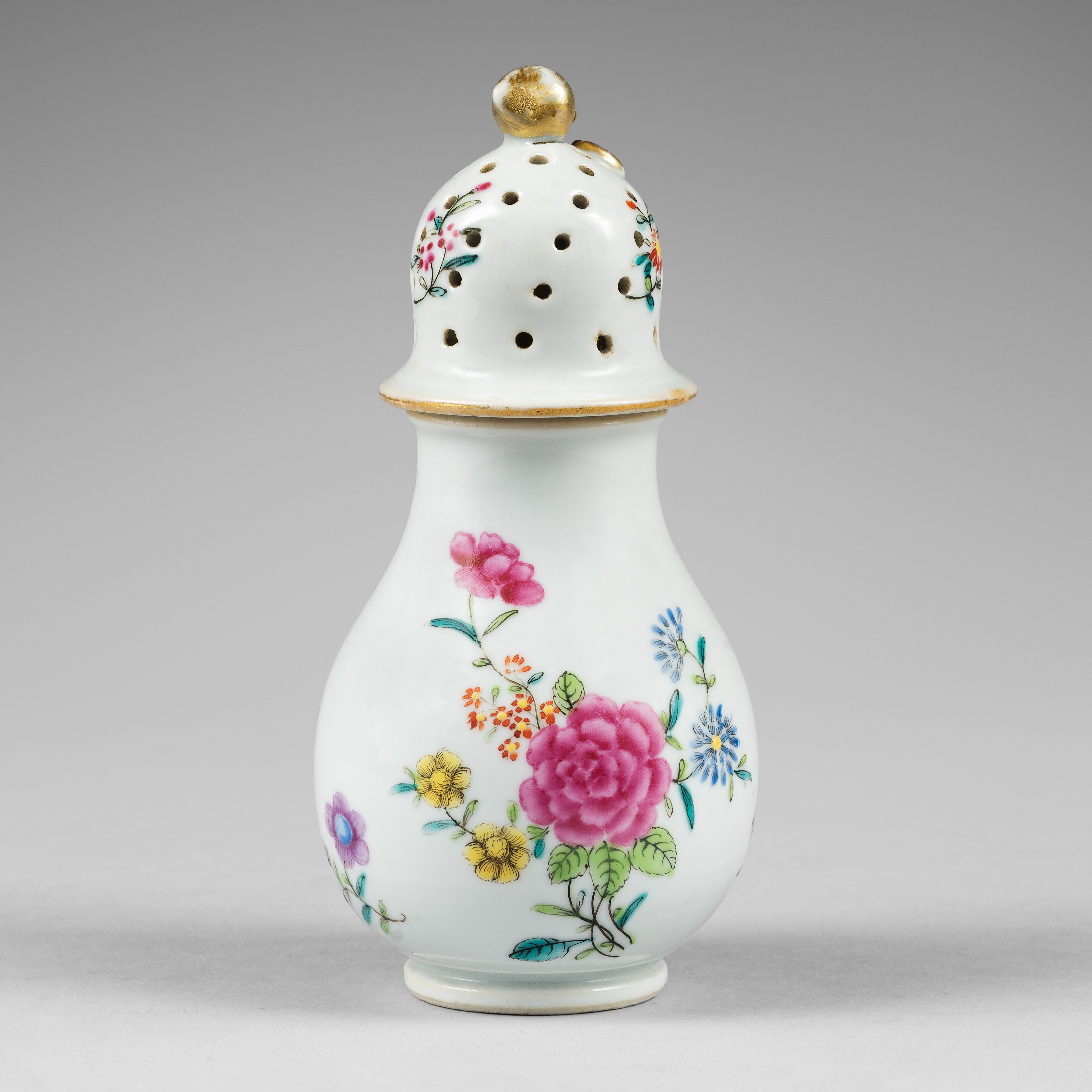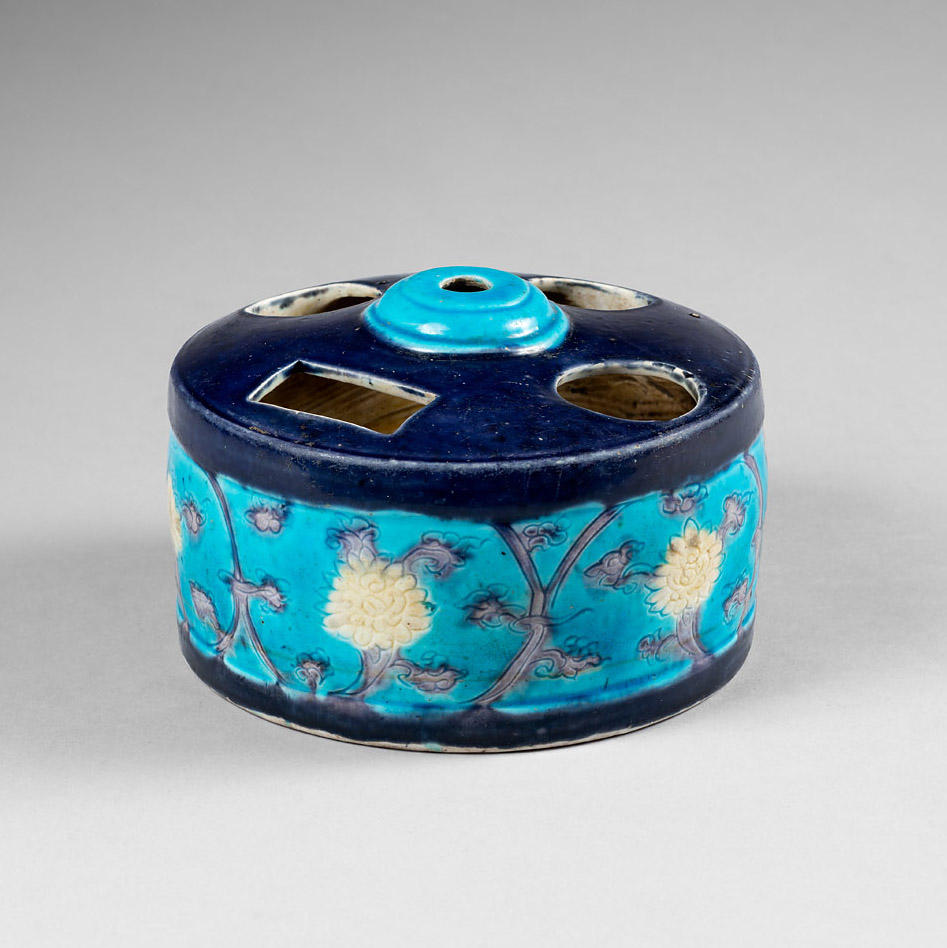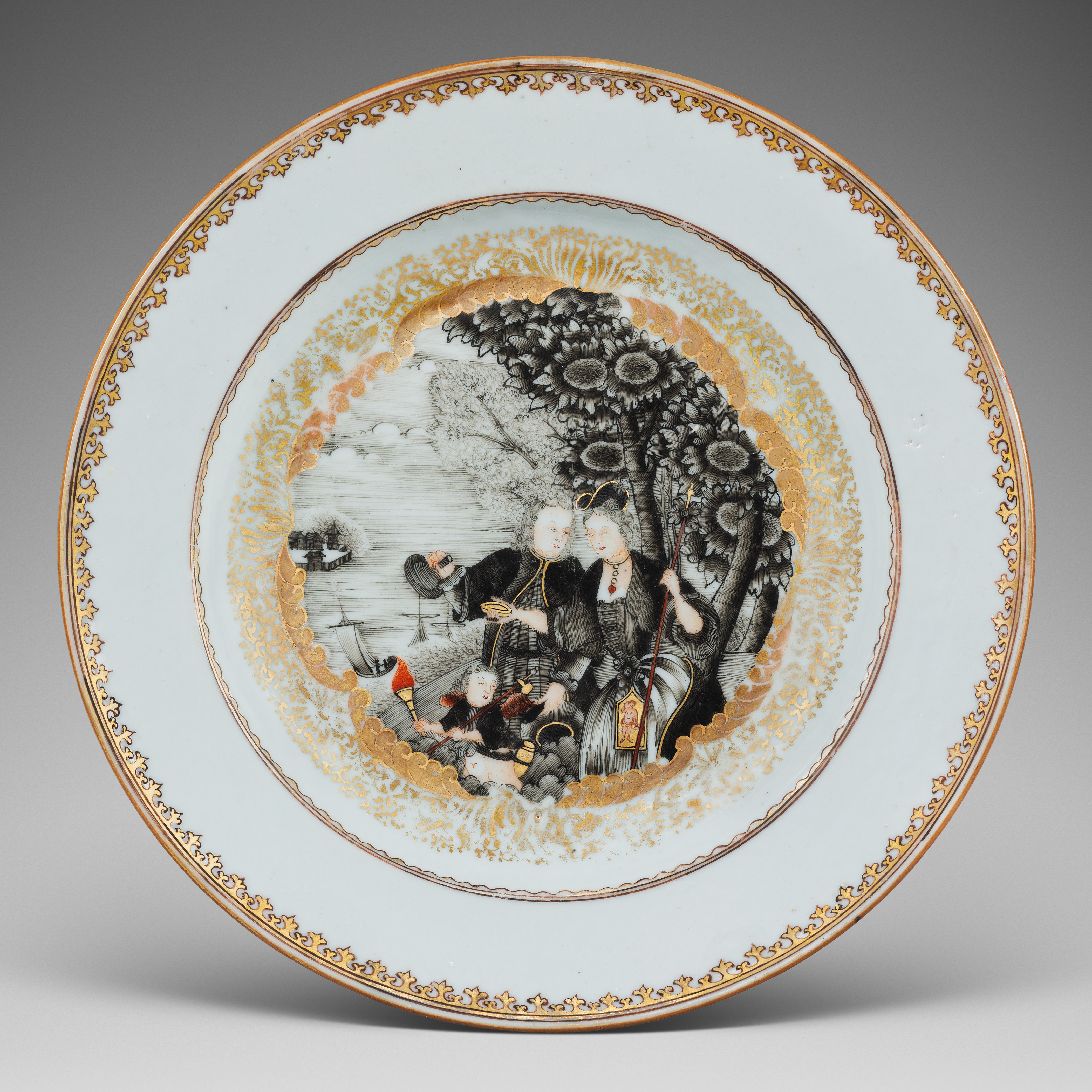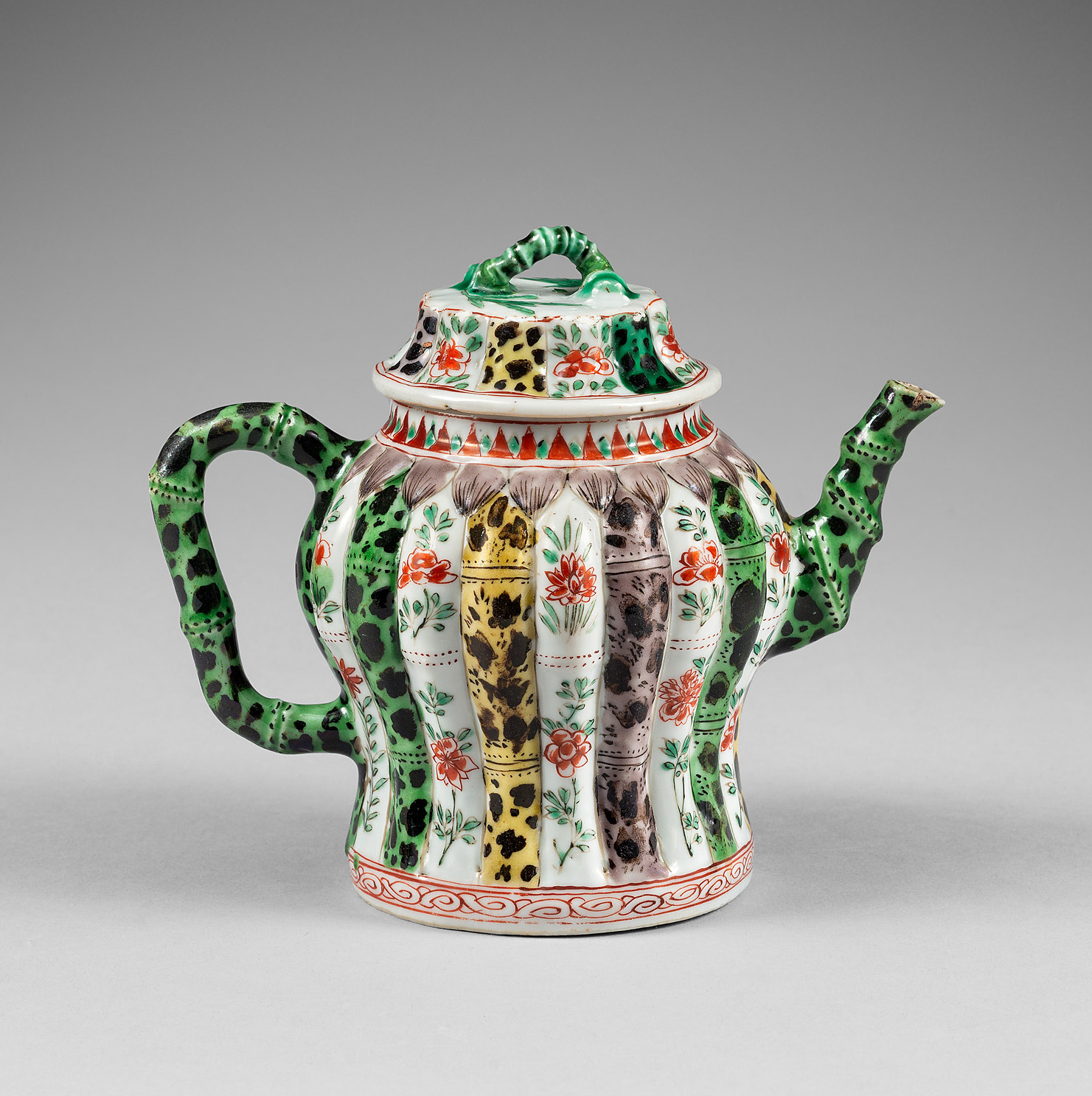
A Chinese famille verte “bamboo form” teapot. Kangxi
Decorated in the famille verte palette, the baluster body divided into sectioned lobes simulating bamboo with blossoming flowers on leafy stems, set with a bamboo curved spout and loop handle, the stepped cover similarly decorated and surmounted by a twisted bamboo finial.
- Country:
- China
- Period :
- Kangxi (166-1722), ca. 1700/1720
- Material:
- Porcelain
- Dimension:
- 5.31 in. (13.5 cm)
- Reference :
- E262
- Status:
- sold
Provenance
A French private collection
Related works
A very similar example is in the Dresden collection (PO3314), and another example was sold at Sotheby’s London, Fine Chinese Ceramics & Works Of Art, 14 may 2014, lot 409.
Notice
The history of Chinese people planting and using bamboo can be traced back 7,000 years. As early as the Shang Dynasty (16th-11th century B.C), bamboo was already used in various aspects of ancient Chinese people’s daily lives. It was used for food, clothing, housing, transportation, music instruments and even weapons. Before the Eastern Han Dynasty (25-220) when paper was invented, strips of bamboo had been used as the most important writing medium more widely used other materials, such as silk, animal furs and rocks. China’s first books were crafted from bamboo strips on string. Thus bamboo played an important part in the daily life of ancient Chinese people, and its role as a writing medium helped keep history records and traditional Chinese culture for us to study today.
It represents the character of moral integrity, resistance, modesty and loyalty. It also stands as an example of loneliness and elegance, among others. This value becomes one of the major themes in Chinese painting, calligraphy and poetry. In the Chinese culture, bamboo, the plum tree in flowers, orchid, and chrysanthemum (known asMéi Lán Zhú Jú) are part of what is called the “Four gentlemen”. These four plants also represent the four seasons, and to which particular qualities are attributed. Bamboo is part of it.

